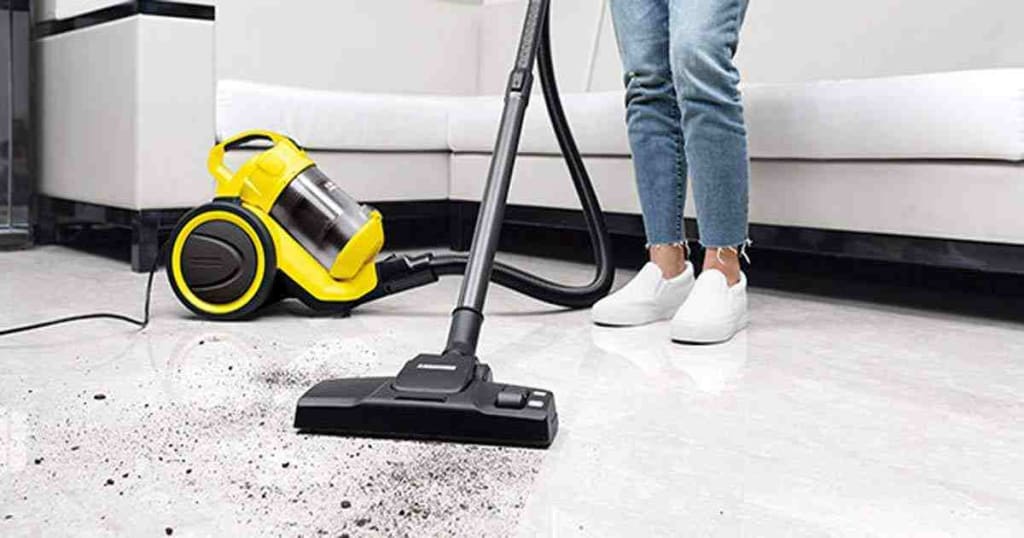How to Use Vacuum Cleaner
A vacuum cleaner is a household appliance that is used to suck up dust, dirt, and debris from floors and other surfaces. There are several types of vacuum cleaners available on the market, including upright, canister, handheld, and robotic vacuums.

A vacuum cleaner is a household appliance that is used to suck up dust, dirt, and debris from floors and other surfaces. There are several types of vacuum cleaners available on the market, including upright, canister, handheld, and robotic vacuums.
Upright vacuum cleaners are the most common type and are designed to be pushed around on wheels while you clean. They typically have a motorized brushroll that agitates the carpet to loosen dirt and debris, which is then sucked up by the vacuum's suction. Upright vacuums usually have a bag or a dustbin for collecting debris.
Canister vacuums have a separate unit that contains the motor and suction, which is connected to the cleaning head via a hose. The cleaning head is then used to clean the floor and other surfaces. Canister vacuums are generally more versatile than uprights and can be easier to maneuver.
Handheld vacuums are small, lightweight, and portable. They are ideal for quick cleanups or cleaning in tight spaces, such as stairs, upholstery, and car interiors.
Robotic vacuums are automated machines that navigate around a room and clean the floor without human intervention. They use sensors and mapping technologies to avoid obstacles and clean efficiently.
Regardless of the type of vacuum cleaner, they all work by creating a partial vacuum that sucks air and dirt into the machine. The air is then filtered through a system of filters, which trap dirt and debris while allowing clean air to escape. The vacuum's filters should be cleaned or replaced regularly to maintain the vacuum's efficiency.
Tips to Use Vacuum Cleaner
Here are some useful tips for using a vacuum cleaner:
• Choose the right vacuum cleaner for the job: Select a vacuum cleaner that is appropriate for the surface you'll be cleaning. For example, if you have hardwood floors, you may want to use a vacuum cleaner with a hard floor attachment to avoid scratches.
• Check the bag or dustbin: Make sure the bag or dustbin is not full before you start vacuuming. A full bag or dustbin can reduce the vacuum's suction and cleaning effectiveness.
• Check the filters: Check the filters regularly and clean or replace them as needed. Clogged filters can reduce suction and lower the vacuum's efficiency.
• Vacuum in different directions: Vacuuming in different directions can help loosen dirt and debris from the carpet fibers and make it easier to pick up.
• Move furniture: If possible, move furniture out of the way so you can clean underneath it. This can help to remove dust and dirt that has accumulated in hard-to-reach areas.
• Use attachments: Make use of the attachments that come with your vacuum cleaner. Attachments can be very helpful in cleaning upholstery, drapes, and other surfaces.
• Don't rush: Take your time when vacuuming to ensure that you clean thoroughly. Rushing can cause you to miss areas or leave dirt behind.
• Regularly clean the vacuum: Regularly clean the vacuum cleaner itself to prevent the accumulation of dirt and dust. This will help to prolong the life of the machine and maintain its efficiency.
Also Read: Advantages and Disadvantages of Microwave Ovens
Advantages and Disadvantages of Vacuum Cleaner
Here are some advantages and disadvantages of using a vacuum cleaner:
Advantages:
• Time-saving: Vacuum cleaners can help you clean your floors and other surfaces quickly and efficiently, saving you time and effort compared to manual cleaning methods.
• Improved air quality: Vacuum cleaners help to remove dust, dirt, and allergens from the air, which can improve indoor air quality and reduce allergy and asthma symptoms.
• Versatility: Vacuum cleaners come in different types and with various attachments, making them versatile and suitable for cleaning different surfaces and areas.
• Deep cleaning: Some vacuum cleaners are designed to provide deep cleaning, reaching areas that may be difficult to clean manually, such as carpets and upholstery.
• Convenience: Vacuum cleaners are easy to use and don't require a lot of physical effort to operate.
Disadvantages:
• Noise: Some vacuum cleaners can be noisy, which may be disruptive and unpleasant for some users.
• Price: High-quality vacuum cleaners can be expensive, making them a significant investment for some users.
• Maintenance: Vacuum cleaners require regular maintenance, such as cleaning filters and emptying dustbins or replacing bags, which can be time-consuming and costly over time.
• Corded: Some vacuum cleaners need to be plugged in, which can limit the user's mobility and make it difficult to clean large areas.
• Not suitable for all surfaces: Some types of vacuum cleaners may not be suitable for certain surfaces, such as hardwood floors or delicate fabrics, requiring the use of specialized attachments or other cleaning methods.
Overall, the advantages of using a vacuum cleaner tend to outweigh the disadvantages, especially if you choose a model that meets your specific cleaning needs and preferences.
Tips to Buy Right Vacuum Cleaner
Here are some tips to help you choose the right vacuum cleaner for your needs:
• Consider the type of flooring: If you have mostly carpets, you may want to consider an upright vacuum cleaner with a motorized brushroll, while if you have mostly hard floors, you may want to consider a canister or stick vacuum cleaner with a hard floor attachment.
• Think about your cleaning needs: Do you have pets, allergies, or specific cleaning challenges? Consider buying a vacuum cleaner with specialized features, such as a HEPA filter, pet hair tool, or specialized attachments.
• Check the weight and maneuverability: Make sure the vacuum cleaner you choose is lightweight and easy to maneuver, especially if you have stairs or tight spaces to clean.
• Check the noise level: If you have small children or pets, you may want to consider a quieter vacuum cleaner to avoid disturbing them.
• Look for high-quality filters: A vacuum cleaner with high-quality filters can help to improve indoor air quality by removing allergens and other pollutants from the air.
• Check the capacity: Consider the size of your home and the frequency of use when choosing the capacity of your vacuum cleaner's dustbin or bag.
• Read reviews and compare models: Before making a purchase, read reviews from other customers and compare different models to find the one that best meets your needs and budget.
By considering these factors and doing some research, you should be able to find a vacuum cleaner that is well-suited to your cleaning needs and preferences.
About the Creator
Mustafa Sakib
I'm a digital marketer and SEO expert. Blogging is my passion. I love to share my thoughts and ideas, read books and blogs, travel, play cricket. You are always welcome to read my blog.
Enjoyed the story? Support the Creator.
Subscribe for free to receive all their stories in your feed. You could also pledge your support or give them a one-off tip, letting them know you appreciate their work.






Comments
There are no comments for this story
Be the first to respond and start the conversation.